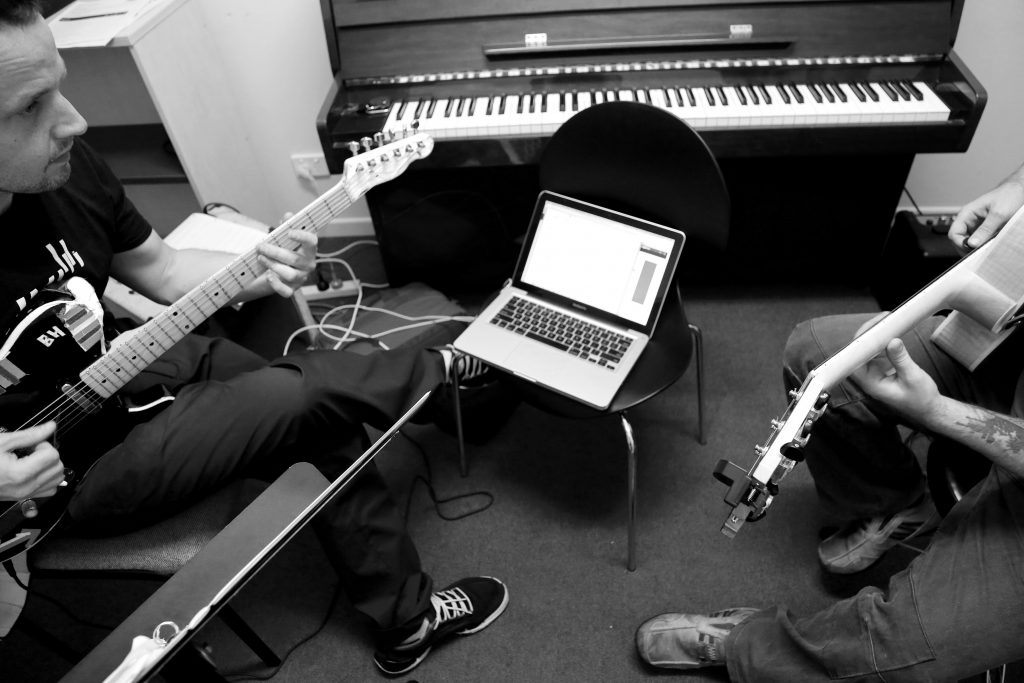By Ben Hauptmann, Guitar Lecturer at JMI
For the past four years I have been teaching guitar lessons in Brisbane at the Jazz Music Institute. During this time, the most common question asked by my students has to do with building a practice routine. Some can find a lot of time each day to practice and others have trouble finding ten minutes. I have come to the conclusion that no matter how much time you allocate to practice, if you set a routine and can stick to it, your results will come quicker and you will find more satisfaction from the process.
A successful practice routine will help you progress in all areas of your playing. It should incorporate technique, musicianship and creativity. Realistically, it can be difficult to stick to a routine for an extended period so it is worth setting a time frame. Revisit your routine after a couple of weeks and set new goals if necessary, always look to change things within your routine if it feels like the momentum of your development is slowing.
The first step in setting a successful practice routine is to figure out it how much time you can dedicate to it each day, be realistic and understand that 30min of concerted practice will be more valuable than 3hrs of noodling. The routine I will describe is geared towards someone who can allow for around 30min a day. You need to use a metronome and a recording device to document your practice sessions as well as enabling critical analysis of your creativity and musicianship.
Warming up with technical exercises is the best way to start your routine, try the two examples below. I think the most important thing to remember when working with these or any other exercises is the fact that they are exercises, they promote the physical development of the left hand. They are like stretches for an athlete; the more dexterous you are, the less chance there is for injury.
This first exercise utilises the spacing of the first four frets and is a stretching and independence exercise starting on the first string. The most important aspect of this is to only move a finger in the left hand just before it is to play another note. This actually creates the difficulty of the exercise. You should immediately notice that when you attempt this, your little finger moves every time your ring finger does. You need to keep each finger on the fret board until it is required to move. This exercise can also be played ascending from the sixth string.

The second technical exercise is another stretching and independence exercise that uses two chromatic lines played between two adjacent strings (the first and second). The pattern of this exercise looks like two power chords follow by two minor third intervals played within the first four frets. You use your index finger to play the first fret, middle finger – the second, ring finger – third fret and pinky – fourth. Once comfortable, you can leave an open string between the two chromatic lines, then two open strings, three and finally four which creates a very difficult stretch.

The warm up continues by incorporating some scale practice using some sequenced scale patterns. Turn on the metronome, practice the below scale patterns using the Major scale. For the more advanced players, play these scale patterns using the various Minor, Diminished and Pentatonic scales. Pick a tempo that will challenge your technique and warm up with familiar scales before moving onto the less familiar ones.

Incorporating musicianship into the routine involves the critical analysis of your playing. Record the warm up and listen back to it. Are you playing in time? Are the subdivisions clear and even? Check to see if you are playing every note cleanly with the best tone possible. This kind of analysis will enhance your musicianship skills and help direct your practice session. The warm up should take about a third of the allocated 30min.
For the next 10min, continue working on your musicianship. Learn a new scale; look at ways to open up your knowledge of the fret board by approaching something you are comfortable with from a different angle. If you know the Major scale in two positions, try playing it in the area of the fret board between those two familiar spots. This is also the time to work on anything set for you during your guitar lessons. Begin learning a melody or chord progression.

For the last 10min you can focus on your creativity. Record yourself improvising over a chord or chord progression you are comfortable with. Make sure the metronome is on and play for two or three minutes. When listening back, check your time feel against the metronome, the phrasing and whether you’re outlining the changes. Focus on the parts that you like about your improvising, this is how you find and develop your own sound. You will definitely see improvement if you stick to this for a week or more and if you can allow more than 30min try this routine multiple times a day. If you would prefer to change this routine to fit into 1hr or more I would keep the technical warmup the same and lengthen the time allocated to musicianship and creativity.
If you would like to find out more about developing good practice habits, there are a number of great teachers that give guitar lessons in Brisbane. In addition to this, I take a number of jazz classes in Brisbane at Jazz Music Institute as well as deliver one-on-one guitar lessons in Brisbane as part of JMI’s Bachelor program. For more information about that, please visit the JMI website.
